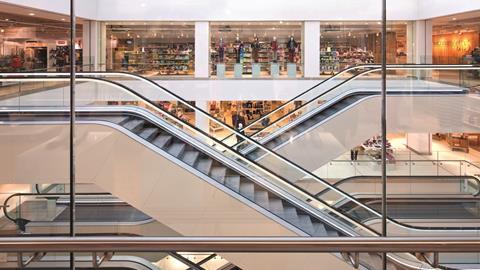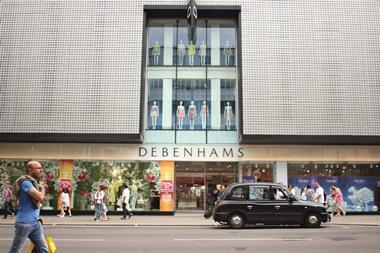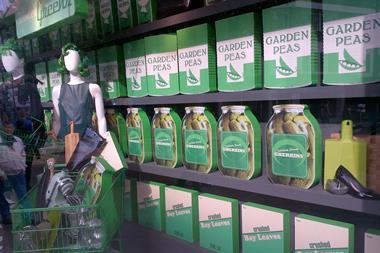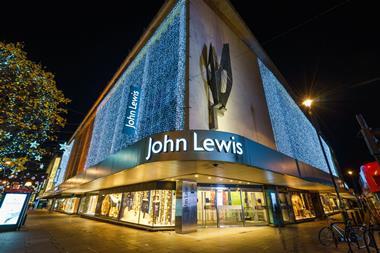For years, Debenhams has been seen by many as the poor relation among London department stores. But following a year-long refit, it is back in the game.
This time last year, shoppers on Oxford Street were in for a surprise. Midway along its length where there used to be the Debenhams flagship there was scaffolding and hoarding. For those familiar with the store, the exterior normally boasted Christmas trees, lights and a lot of foliage during the festive period.
Instead, it almost looked as if the British Land-owned structure was being demolished and something new would be taking its place. Twelve months later, something has: a new-look department store called Debenhams.
It launched last week and while there is still some external hoarding, enough of the frontage has been revealed for shoppers to see that change has been wrought and that there is still a Debs on Oxford Street (the store has actually traded throughout the revamp but it would have been easy to think otherwise).
Richard Cristofoli, Debenhams’ marketing director, articulates what many walking the street may have felt: “It’s nigh on 25 years since we’ve done anything with this store. It was obvious that the three other department stores have done a lot of work on the fabric and design of their buildings and we hadn’t. Now we can hold our heads up high again.”
Twenty-five years is a lot of lost time to catch up on, and making up for it is an expensive business. Cristofoli says the interior refurbishment has cost £25m and the exterior will have cost £15m by the time all the hoardings finally come down in February.
The “other three” Oxford Street department stores that Cristofoli refers to are, east to west, John Lewis, House of Fraser and Selfridges. There has long been the sense, probably because the store looked tired, that Debenhams was the poor relation among the quartet. Stand outside the store today, however, and it looks like a contender.
One of the catalysts for change has been the relocation of the Debenhams head office, which used to be partly housed on the stores’s uppermost levels. The rest of the head office was tucked away behind the shop on Welbeck Street. The leases on the bulk of the head office were coming to an end, however, and the decision was taken to relocate to 10 Brock Street, a short walk away.
The net effect has been to free up 25,000 sq ft of prime selling space in the Oxford Street shop, equating to “a floor and a half”, as Cristofoli puts it. All of this, however, is only apparent when the store is viewed internally.
Externally, the things most likely to strike passing shoppers are the see-through glazed corners. These start just above the hoarding that states ‘Your fabulous new store is now open’, in case there were any doubt, and run up to the top of the building, immediately lending a contemporary feel to the enterprise, as well as allowing views into the interior. The rest of the frontage, above the store window line, has a shimmering metallic surface. Assuming all of this has the effect desired by Debenhams, shoppers will be drawn through the doors, where the completely remodelled interior awaits.
A sense of space
One of the features of the interior of this store when it was launched with its central bank of escalators in the 1980s was that there was a real sense of space, right down to the Liberace-like grand piano on which popular tunes were bashed out. This might not have been to everybody’s taste and was, to an extent, emblematic of the times, but there was no denying that a note of retail grandeur (and kitsch) was struck.
Over time, however, the demand for additional selling space and the expanding Debenhams product offer meant the store morphed from having a relatively spacious interior to a conspicuously cramped one. “It was overwhelming as you walked in and there was no decompression zone. So a chunk of the new space has been given to both decompression and circulation,” says Cristofoli.
Practically, this means that as well as a new ceiling for the beauty hall, with white rafters set against a black void, the beauty offer does not feel cramped. Cristofoli is at pains to point out the Dior counter in the middle of all of this, which he says is the largest in Europe.
After a long walk through the beauty hall, the shopper is in the thick of things, with the escalator bank and atrium taking centre stage. On the ground floor, the shopper positioned at the balustrade that surrounds the central void can stare up five floors and down one. This is reminiscent of the John Lewis store along the street, and the overall impression is of glass and white planes encircling the space.
The escalators themselves, always a feature of the previous interior, have been cleaned up, but the long travelator-like effect before each one begins to rise has been retained and it does give the shopper a longer time to admire the view.
Designers and dining
And then there are the individual floors. Debenhams has always used islands of merchandise that front on to walkways. The new layout has them too, but it is easy to be unaware of being led - while there are long straight lines, there are also deviations from the path.
The first floor is an enormous menswear repository and all of the Designers at Debenhams have been given substantial spaces in which to strut their stuff. Each designer has had license to influence the point-of-sale material that accompanies the collection, meaning that, for instance, there is a difference between the font used for Jasper Conran on the men’s floor and on the women’s floor above it.
The cash desks and fitting rooms on this level are sea-green, contrasting with the hot pink used acrosswomenswear on the two floors above.
Homewares is on fourth, childrenswear on fifth and the basement is home to lingerie, women’s shoes and a bistro. The latter is one of three new restaurants and cafes that are to be found in the shop and Debenhams has really pushed the boat out. The fifth-floor restaurant, in particular, looks more like a tip-top John Lewis than a Debs of old.
Other elements include a large click-and-collect area with a staffed desk, a travel shop, personal shoppers and a wedding list service.
There are also 60 screens across the store, enabling shoppers to browse the wider Debenhams world, although the physical offer is very substantial.The floors have been replaced throughout the store, giving the interior a newly minted feel and justifying what will have been a major expense.
Cristofoli makes the point that the store has to act as a “global flagship”, a “beacon” for potential international franchisees, as well as serving the needs of Oxford Street shoppers.
Debenhams is now up-to-scratch with this shop and is back in the grand department store league table that is a feature of this part of London.



























No comments yet